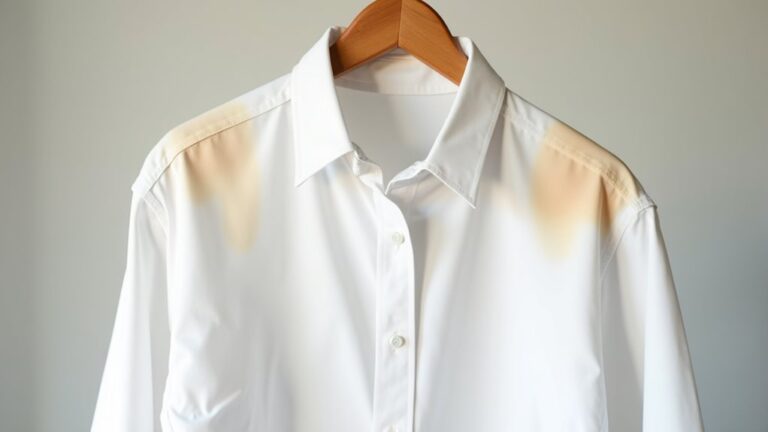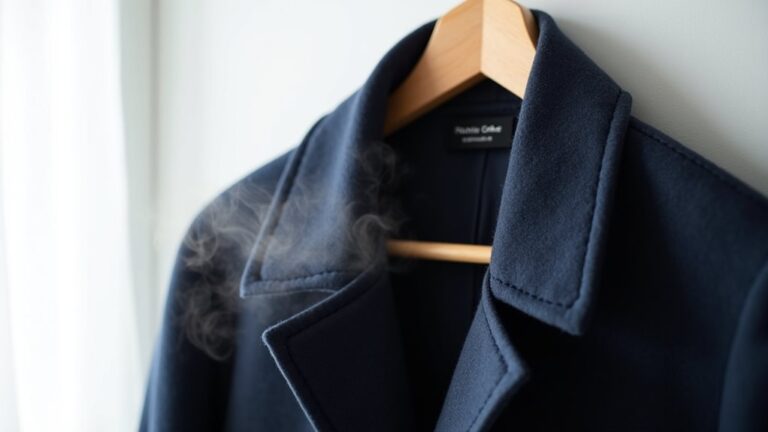Yes, dry cleaning can remove many stubborn stains that regular washing can’t tackle, especially oil, grease, ink, and wine stains that seem impossible to budge. The specialized solvents work like magic on delicate fabrics without causing damage, though I’ve learned the hard way that timing matters – the sooner you get that stained garment to professionals, the better your chances. However, some stains like old sweat marks or bleach spots might prove more challenging, and there’s definitely more to understand about maximizing your success.
How Dry Cleaning Works on Different Types of Stains
When I first discovered the magic of dry cleaning after ruining my favorite silk blouse with a water-based stain remover, I realized that understanding how different solvents work on various stains can save you both heartache and money.
Learning the hard way that silk and water don’t mix taught me the true value of professional dry cleaning expertise.
Professional dry cleaning tackles oil and grease stains with specialized solvents that dissolve what regular washing can’t touch, while protein-based stains from blood or sweat get enzyme treatments that preserve delicate fabrics.
Those stubborn wine and coffee marks? The cleaning solvents neutralize tannin compounds without fabric damage.
Dye stains require targeted approaches to remove color transfer, and combination stains get careful assessment for ideal stain removal.
However, fresh blood stains are generally easier to remove than set-in stains, and pre-treating with cold water before dry cleaning can significantly improve results.
Trust me, your wardrobe will thank you!
Oil, Grease, and Fat-Based Stains: Dry Cleaning’s Specialty
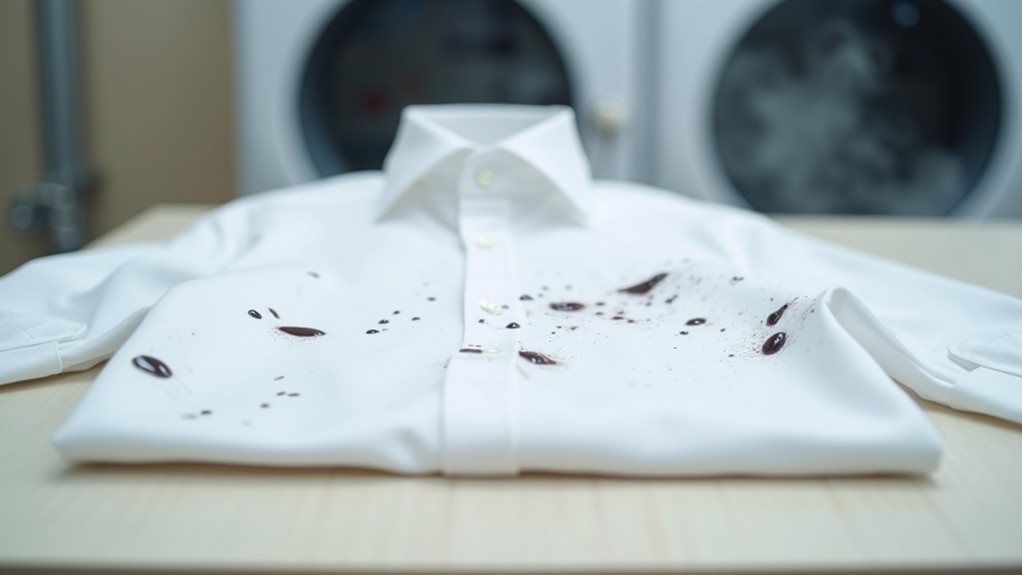
After accidentally dripping olive oil down my brand-new cashmere sweater during what was supposed to be a romantic dinner, I learned the hard way that oil-based stains are absolutely where dry cleaning truly shines.
You’ll find that professional dry cleaners use specialized solvents that dissolve grease and fat-based stains without the fabric damage water causes. Unlike traditional washing, which actually makes oil stains worse, the dry cleaning process penetrates deep into delicate fabrics to lift away everything from cooking oils to cosmetics and sunscreen.
Your professional dry cleaner will often use multiple treatment steps for stubborn grease, guaranteeing complete stain removal while preserving garment integrity – something I desperately needed for my expensive sweater! 😅
This specialized approach is particularly crucial for delicate fabrics like silk, wool, and cashmere that can be severely damaged by water and traditional washing methods.
Protein-Based and Sweat Stains: Professional Treatment Methods
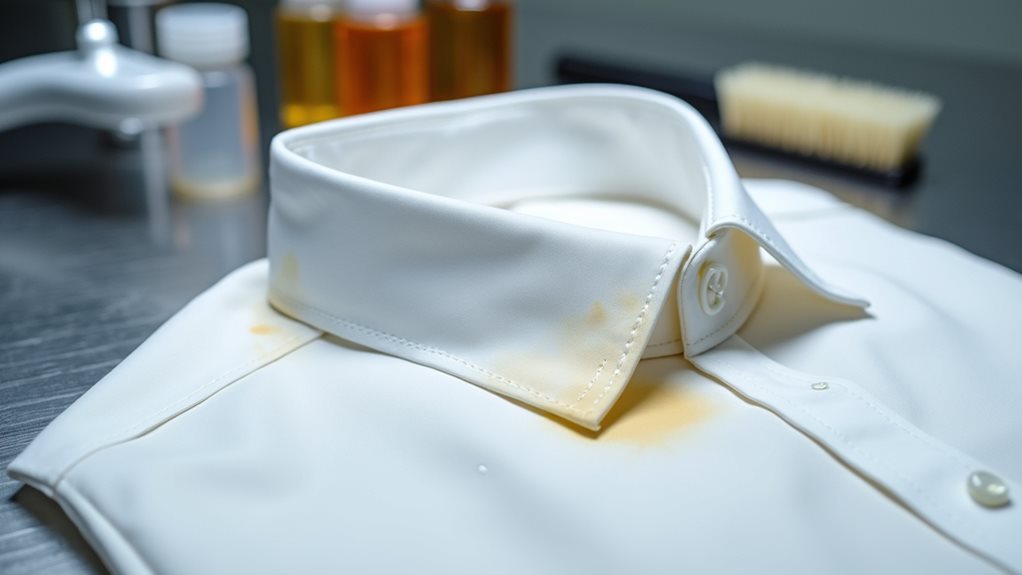
Although I thought I’d mastered the art of staying sweat-free during important presentations, my favorite silk blouse told a different story after one particularly nerve-wracking client meeting left me with those telltale yellow underarm stains that seemed impossible to remove.
Here’s what I learned about tackling protein stains: dry cleaning is particularly effective because professionals use specialized enzyme-based solutions that break down these stubborn marks without damaging delicate fabrics.
Unlike regular cleaning solvents, these professional treatment methods target the protein bonds that make sweat stains so persistent.
The key is acting quickly and being honest with your dry cleaner about the stain’s origin, which dramatically improves stain removal success while guaranteeing proper garment preservation.
However, it’s important to note that dry cleaning has limited effectiveness against sweat stains because it uses chemical solvents rather than water, making it less successful with the water-soluble components that create yellow discoloration.
Don’t suffer in silence with ruined clothes!
Wine, Ink, and Dye Stains: When to Choose Dry Cleaning
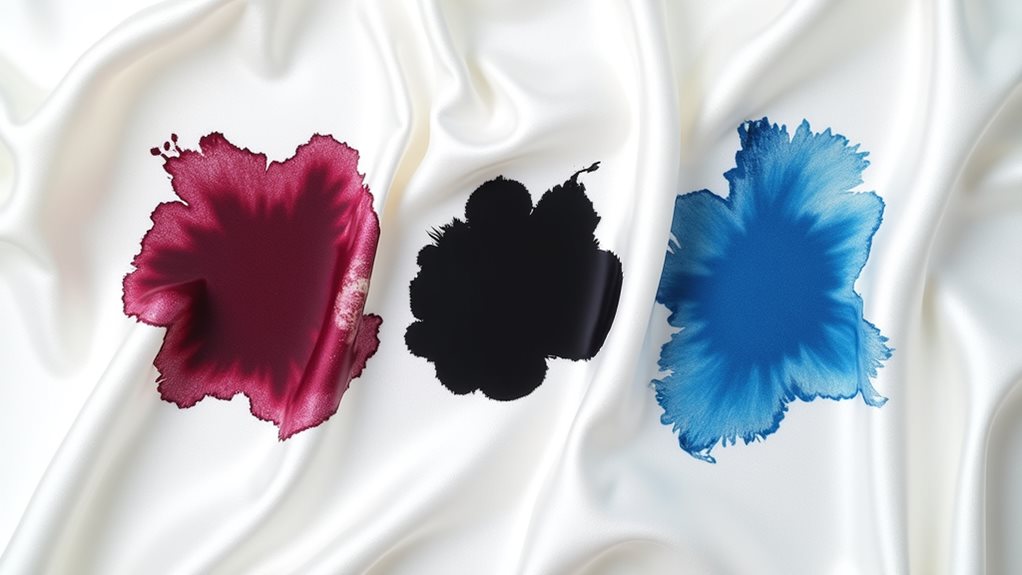
Since spilling red wine on my cream-colored cashmere sweater during my sister’s wedding reception, I’ve become painfully aware that certain stains require immediate professional intervention rather than panicked attempts at home remedies.
Wine stains contain tannins that bond aggressively with fabric fibers, making professional cleaners your best bet for salvation. Similarly, ink stains from that leaky pen in your pocket demand specialized solvents that only dry cleaning facilities possess.
Dye stains, whether from hair color mishaps or bleeding fabrics, respond beautifully to targeted chemicals that preserve your garment’s original colors while lifting the offending marks.
When dealing with delicate fabrics like silk or wool, dry cleaning protects fabric integrity far better than traditional washing, preventing shrinkage disasters that’ll haunt you forever. 😅
The success of stain removal depends heavily on fabric type, stain composition, and how quickly you get your garment to the professionals.
Limitations: Stains That May Not Come Out Completely
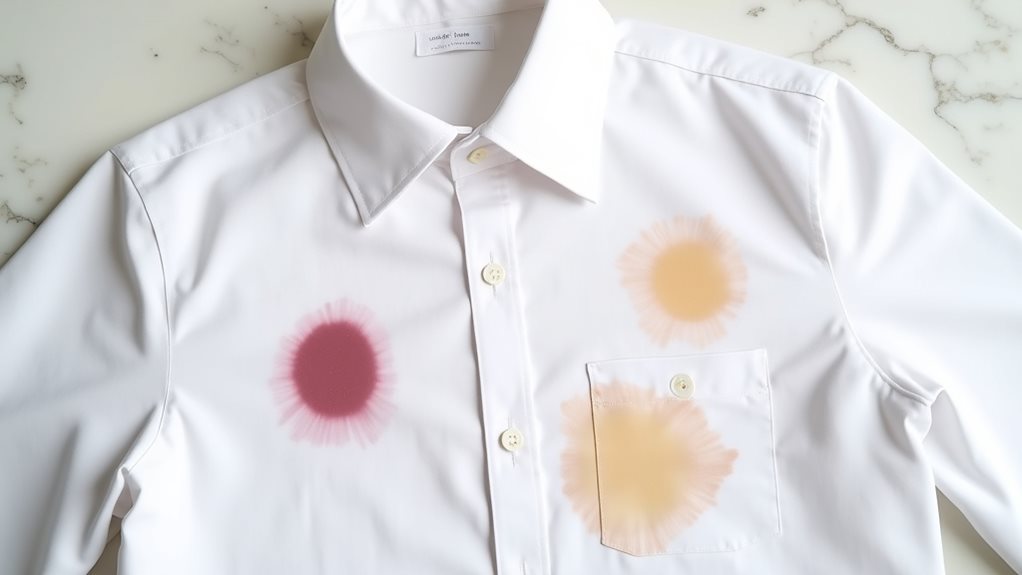
While I’d love to tell you that dry cleaning is a magical solution for every stain disaster, the harsh reality is that some marks will stubbornly resist even the most skilled professional’s efforts, leaving you with a painful reminder of that unfortunate encounter with your morning coffee.
Old stains and set-in stains become increasingly difficult to remove once they’ve bonded with fabric fibers, often resulting in incomplete removal that leaves a frustrating residual mark.
Professional cleaners must balance stain removal with garment integrity, especially when dealing with delicate fabrics like silk or leather that can’t withstand aggressive treatments.
Some culprits, particularly bleach and strong dyes, create permanent alterations to fabric structure, making complete restoration impossible regardless of expertise.
Additionally, water-based stains or those previously treated with heat may prove particularly challenging for dry cleaning processes, as the chemical solvents work best on oil-based substances rather than water-soluble marks.
Tips for Maximizing Stain Removal Success
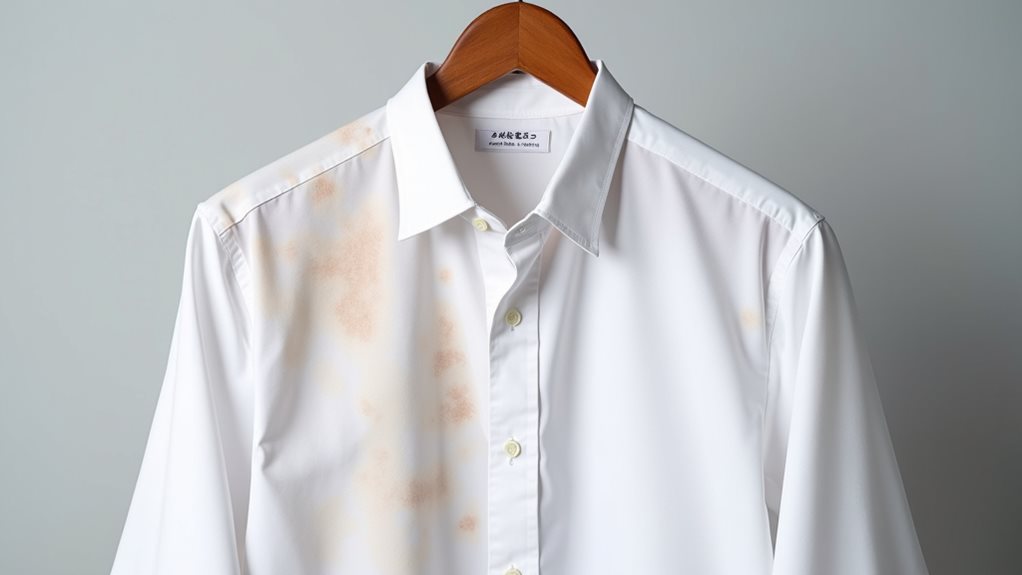
When it comes to maximizing your chances of successful stain removal, timing becomes your most powerful ally, and I’ve learned this lesson the hard way after countless clothing casualties over the years.
You need to act quickly—within hours if possible—because once stains set, even professional treatment becomes an uphill battle.
Don’t attempt home remedies; trust me, I’ve turned minor wine spills into permanent purple badges of shame 😅. Instead, avoid home remedies and head straight to experienced dry cleaners who understand delicate fabrics and possess specialized solvents for proper garment care.
Never apply heat, as heat can set stains permanently, making them nearly impossible to remove through any cleaning techniques.
Dry cleaning excels at removing oil-based and grease stains using chemical solvents like perchloroethylene that water-based cleaning simply cannot penetrate effectively.


